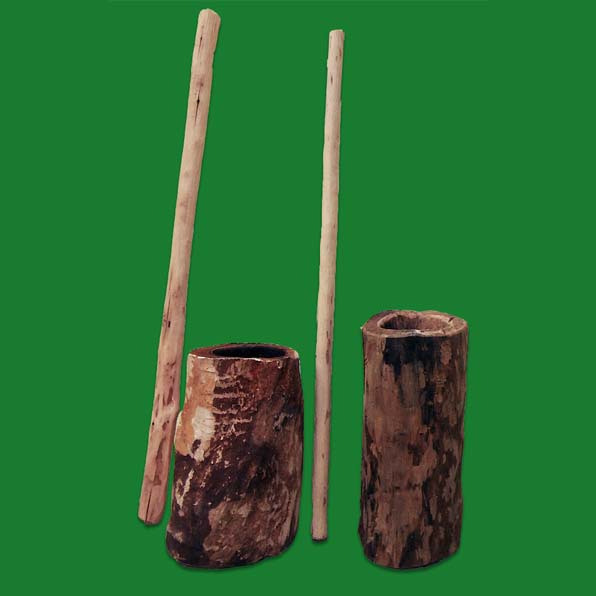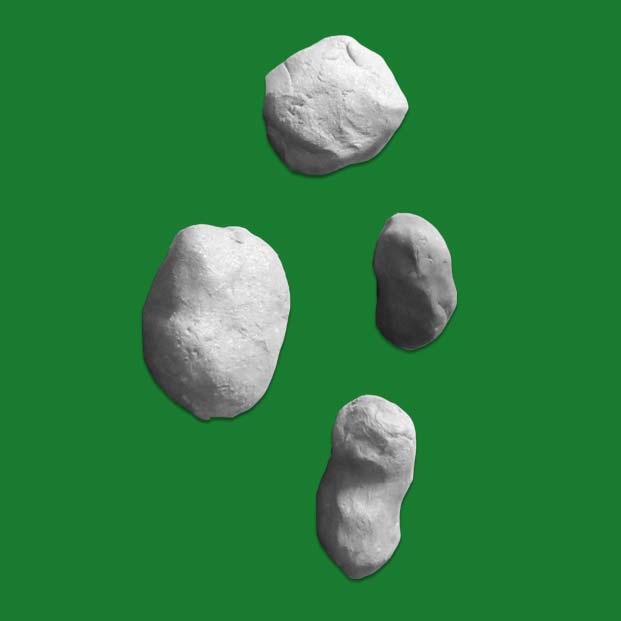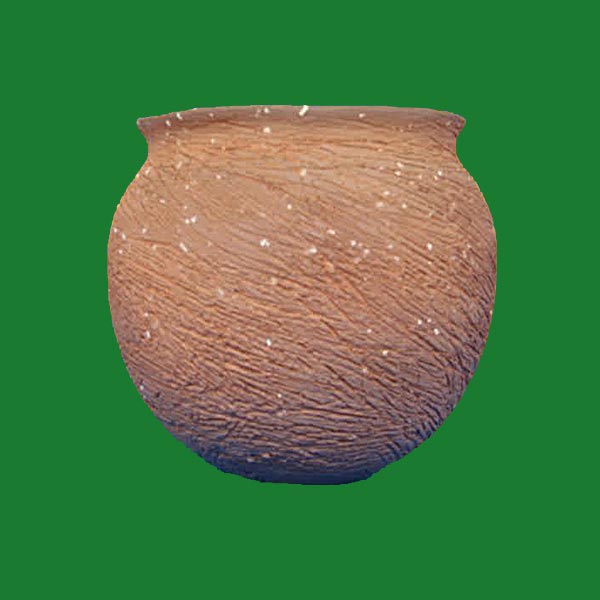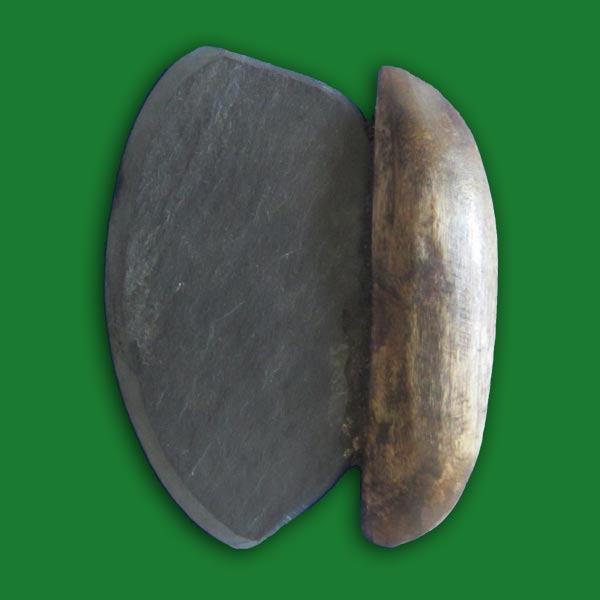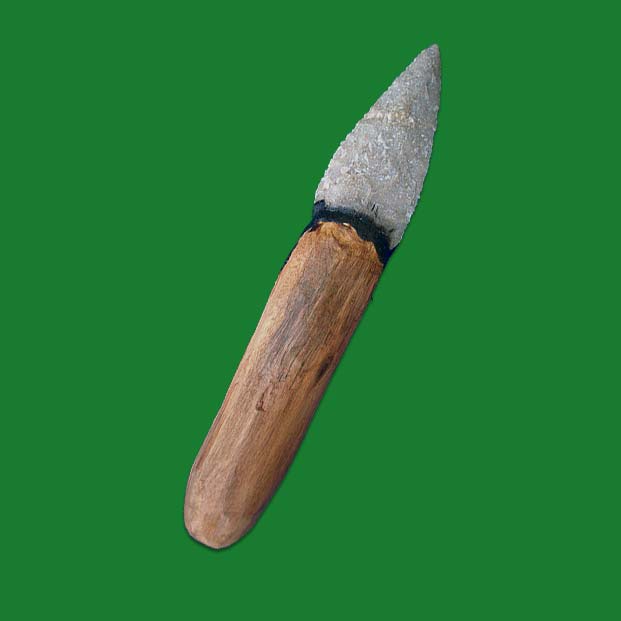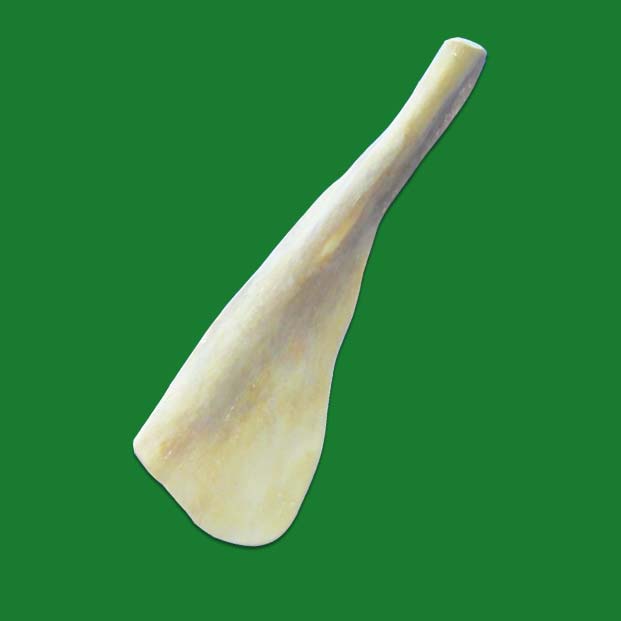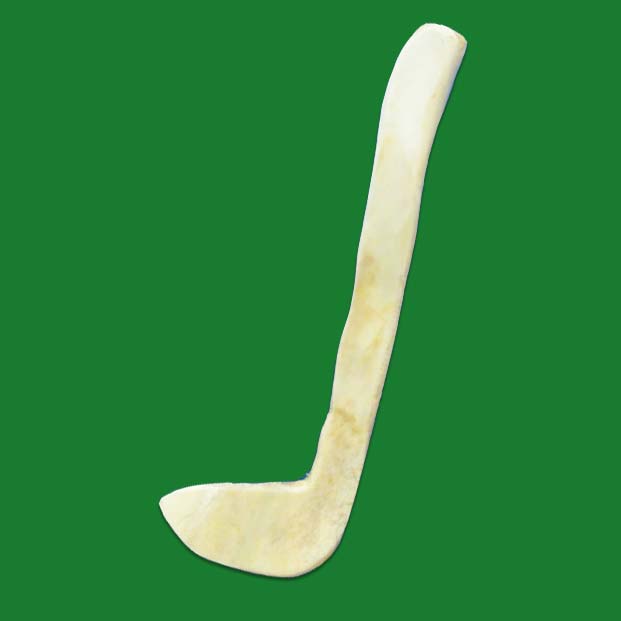Mortar and Pestle
Corn and other plant seeds were ground into meal and flour for cooking using a wooden mortar and pestle. This process was used for thousands of years in food preparation.Great for hands-on participation especially for children. Practically indestructible. Wooden...
Ceramic Cooking Balls
Pottery cooking balls are found on numerous archaeological sites in the southeastern United States and were used during the Archaic period (several thousand years ago) when ceramic cooking pots were not in use. Archaeologists believe a bunch of ceramic balls were...
Pottery Vessels
Tools From The Earth can make many styles of North American pottery for your exhibit or hands-on program. Contact us for available types and prices
Eskimo Ulu Knife (Women’s Knife)
The ulu knife was used to cut whale blubber and meat, butcher salmon and even used to cut children's hair. There were many styles from different regions. The slate ulu dates to prehistoric times before much metal was used. The slate blade is set in a wood handle with...
Middle Missouri Knife
Bone handles made from bison ribs or vertebral spines (bones in the bison's hump) along with detached stone blades are found on Plains archaeological sites on the upper Missouri River. The stone blades are set in bison rib or vertebral spines with hide glue. These...
Stone Knife
This was a general all-purpose household knife used to cut string, food, meat, hide or wood. The stone for the knife, flint, is very hard and can be chipped to a very sharp edge, but is also brittle and can break easily. The stone blade is attached to a wood handle...
Scapula Knife/Squash Knife/Cleaver
Scapula knives, squash knives and cleavers are made from portions of bison scapulas (shoulder blades). Thin areas of scapulas served as the cutting edge with thicker ridges often serving as handles. Prehistoric people often made Scapula knives/squash knives and...
Hooked Bone Knife
The hooked bone knife is a cutting tool made of a bison scapula (shoulder blade) that looks similar to the modern day linoleum blade -- the inside edge is sharp but how it functioned is not known. It is found on Plains archaeological south of the Middle Missouri...

